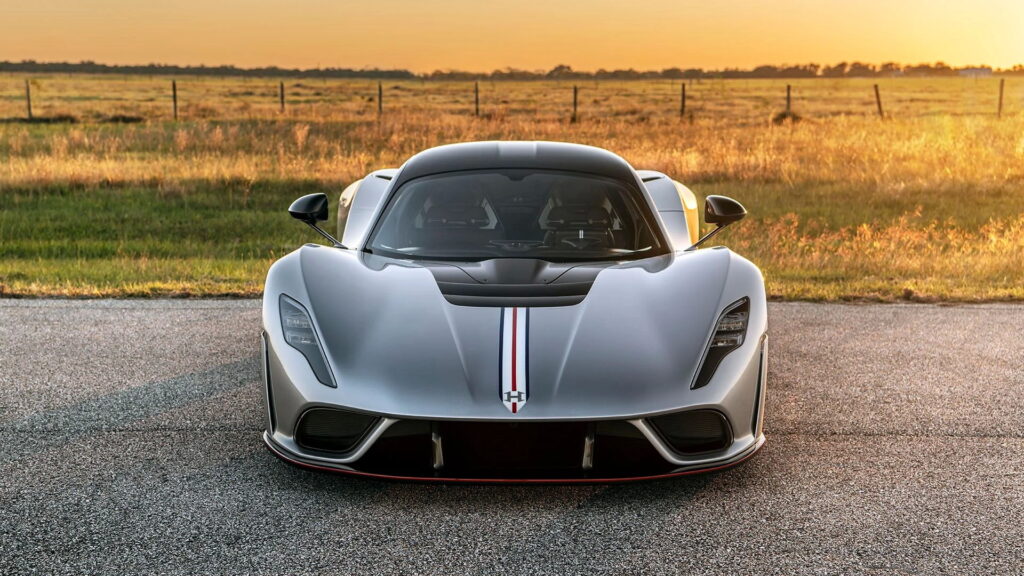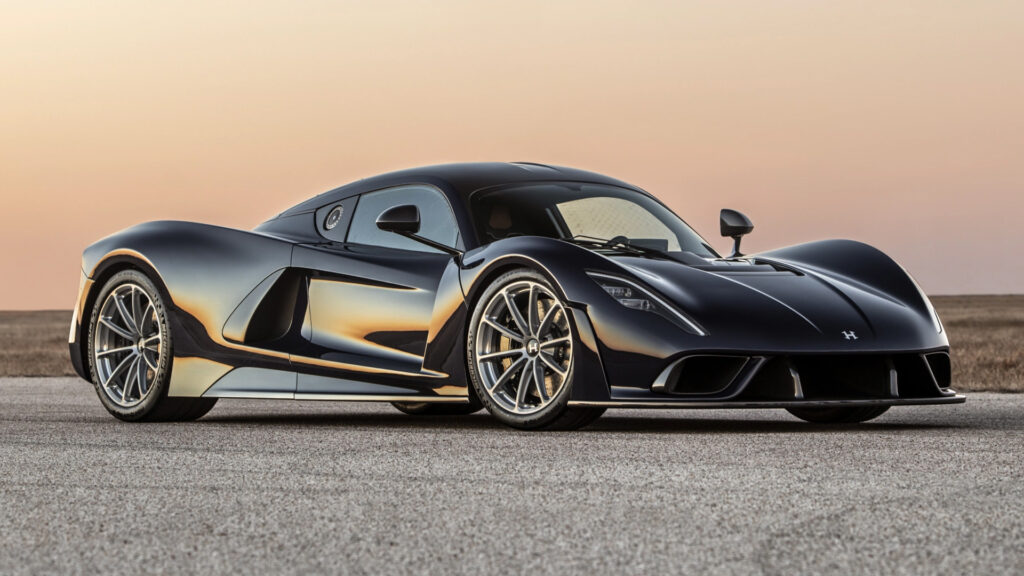- The hypercar is powered by a 6.6-liter twin-turbocharged V8 known as ‘Fury.’
- With 1,817 hp, the Venom F5 is one of the most powerful road-legal cars on earth.
- Earlier this month, a Venom F5 was crashed during 250 mph testing.
The Hennessey Venom F5 could establish itself as the world’s fastest production car, and as we eagerly await the small manufacturer to chase the 300 mph barrier, Hennessey has shown us just how quick the hypercar can be down the half-mile.
As part of a recent round of half-mile testing of the Venom F5, company founder John Hennessey jumped behind the wheel and launched it down the half-mile. By the time the Venom F5 had crossed that mark, it was traveling at an incredible 219.07 mph (352.5 km/h), which itself is higher than many supercars. Company test driver David Donohue then jumped into the driver’s seat, drove down the half-mile, and reached an even more impressive 221.92 mph (357.1 km/h).
Read: Hennessey Venom F5 Crashes During High-Speed Testing At NASA Site
Onboard footage from John Hennessey’s run shows the car had some traction issues off the line due to the unprepped surface, but as it surpasses 60 mph (96 km/h), it starts to gather momentum at a frightening pace. Mere moments after passing 70 mph (113 km/h), the Venom F5 is doing 100 mph (161 mph). Just a few seconds later, it’s traveling at over 150 mph (242 km/h) and breaks the once mythical 200 mph (320 km/h) barrier without even breaking a sweat.
Hennessey notes that the Venom F5’s straight-line abilities are made all the more impressive when you consider that the tests were performed in weather ranging from 80 to 90 degrees Fahrenheit (27-32 C). It was raining, too.

The Venom F5 has been pushed through to 271.6 mph (437 km/h) as part of its development regime, and earlier this year, John Hennessey said the brand would push to eclipse the 300 mph (482 km/h) barrier later this year. The pursuit of this mark hasn’t been plain sailing.
On July 1, a Venom F5 prototype crashed during tests that saw it exceed 250 mph (402 km/h). Hennessey says it was testing a new aerodynamic setup before the car suddenly lost downforce along the runway.



